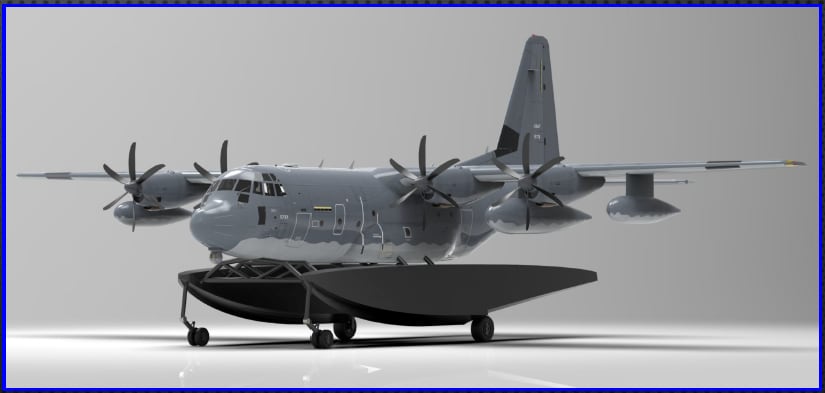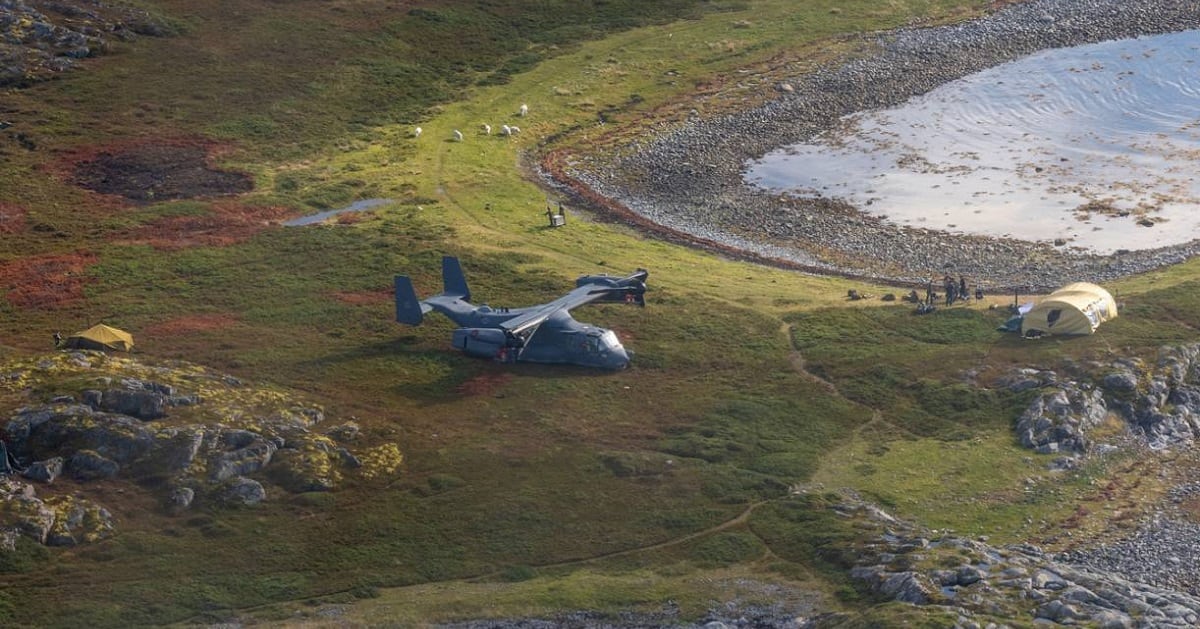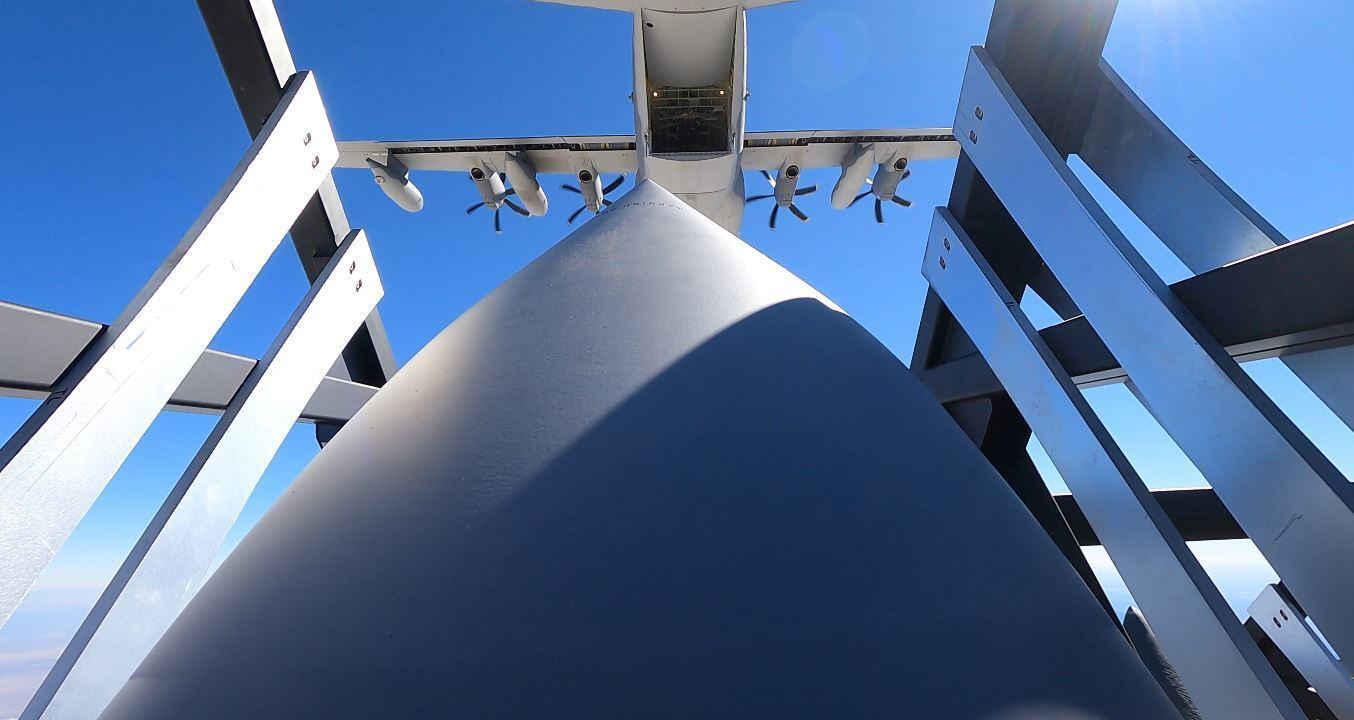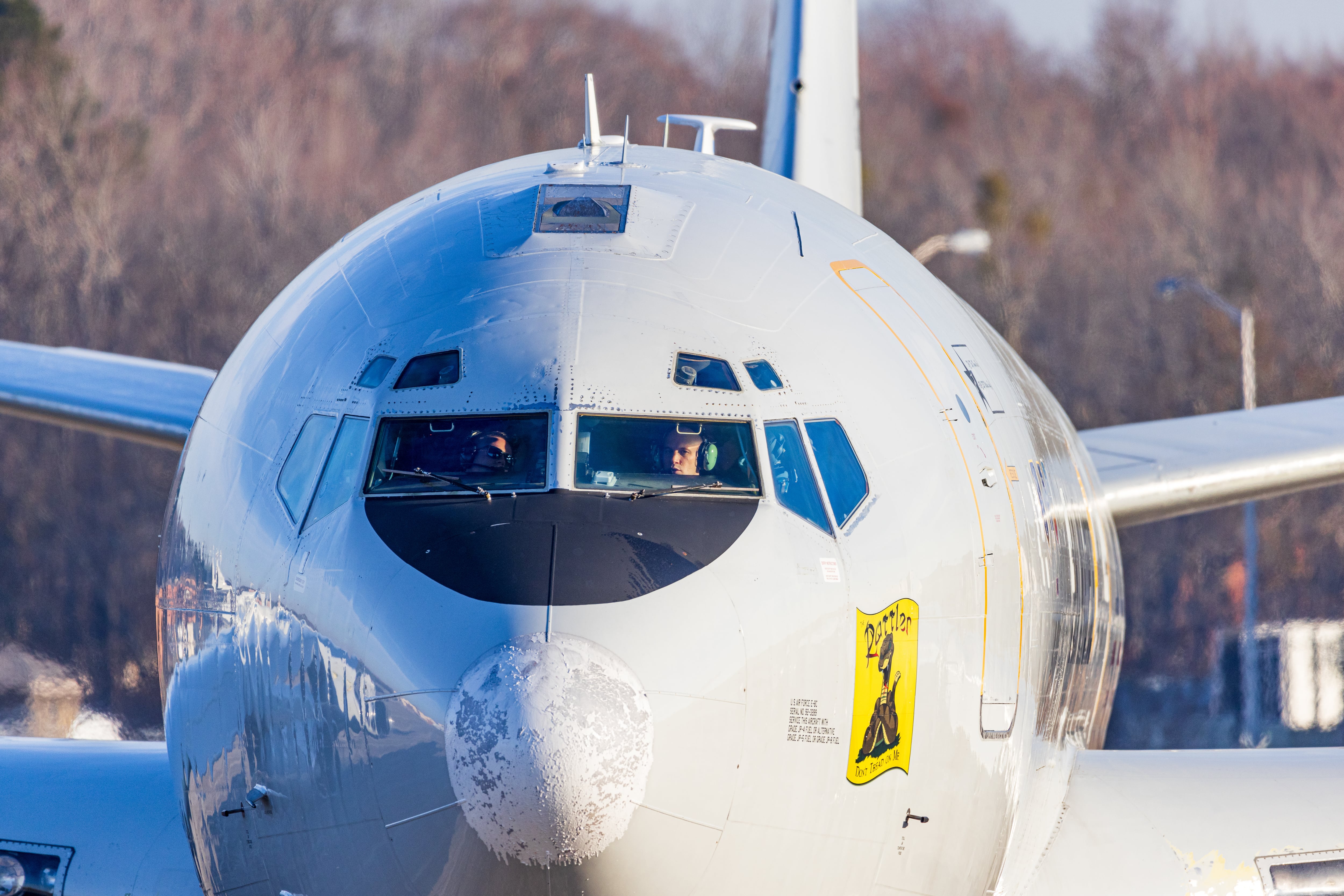NATIONAL HARBOR, Md. — Air Force Special Operations Command is moving forward with plans to turn its cargo planes into weapons-toting, amphibious aircraft.
Two separate projects look to push the limits of what the C-130 Hercules-based airlifters can do in war, particularly in the vast Pacific. One wants to turn the ocean into a landing strip. Another aims to repurpose the planes as makeshift bombers.
“If we constrain ourselves to thinking about [the C-130] as simply a cargo airplane because that’s what it was originally built to do, I think we’re missing something,” AFSOC boss Lt. Gen. Jim Slife told reporters at a roundtable here Tuesday.
RELATED

Flight tests of an amphibious MC-130J may start in fiscal 2023, he said. If that succeeds, it could open new opportunities for where and how special operations units can ferry supplies around the world.
“That’s going to give us the ability to turn any large body of water into a landing zone where we can insert [or] extract special operations forces and the equipment and other things that might cause dilemmas for our adversaries,” Slife noted earlier this month.
Congress hasn’t yet approved a defense budget for the new fiscal year, which begins Oct. 1. AFSOC’s money for flight testing is wrapped up in that process, meaning its previous timeline of testing the concept by the end of 2022 will likely be delayed.
In the meantime, Slife said his command is vetting the design in a wave tank to make sure it’s stable. Those tests have gone well so far, he said.
“We started out with a number of digital designs. We ran through a series of testing to figure out, do we want to do a catamaran, a pontoon, a whole applique on the bottom of the aircraft?” Slife said at a Sept. 7 event hosted by the Air and Space Forces Association.
RELATED

Officials settled on a design that best balances factors like aircraft drag, weight and performance. It relies on a hardware kit that can be installed in the field as needed, though not without some effort.
Still, Slife said, it’s easier than buying an entire fleet of amphibious planes outright.
Now the command is figuring out the logistics of how the Air Force would support an amphibious plane during real-world operations.
“It’s been 30 years since I studied aerospace engineering, but what I can recall from my time as an engineering student is, if you were going to build an amphibious airplane, you probably wouldn’t start with a C-130. But the C-130 is the ingredient that we have,” Slife said earlier this month.
Battlefield logistics are also a concern for those trying to turn the MC-130J into a bomb truck.
In December, the Air Force experimented with launching an extended-range Joint Air-to-Surface Standoff Missile cruise missile, which can hit a target hundreds of miles away, out of the back of a Commando II plane. Now it wants to try toting 12 Joint Air-to-Surface Standoff Missiles — the same load as the B-52 Stratofortress bomber can carry.
RELATED

Similar efforts are underway for the C-17 Globemaster III airlifter.
“It doesn’t require any aircraft modifications, it doesn’t require any special aircrew training. It really just takes advantage of the characteristics of that platform,” Slife said of the MC-130J.
Unlike the B-52, though, an MC-130J needs only a short stretch of dirt or asphalt to take off and land. That complicates the calculus for anyone that might want to take out American infrastructure, Slife said.
“It’s not hard to figure out where all the 10,000-foot concrete runways in the Pacific are. But when you’re trying to figure out where the 3,000-foot straight stretches of road and grass strips are … that’s a different targeting problem for your adversaries,” he said earlier in the month.
The concept still requires some thoughtful planning. Shorter runways may be harder to find, but they become more conspicuous when a pile of missiles is stacked nearby. Palletized munitions can become a target themselves.
“Part of what we’re working through … is weapons storage,” Slife said. “Do we really want them out in the middle of a field somewhere, next to a straight stretch of road?
RELATED

AFSOC is also exploring the prospect of adding new sensors and electronic warfare capabilities to its airlifters.
The command plans to test out an active electronically scanned array radar on the plane, which would let it conduct surveillance and provide precision targeting data to other military assets.
Depending on which sort of AESA radar is used, the project could offer the Air Force a way to supplement the ground target-tracking capabilities of the E-8C Joint STARS jets. The fleet is in the process of retiring after more than 30 years in service.
“As we look at what we might need it to do for the next 20 years, we need to look at different capabilities,” Slife said Tuesday. “Things like an AESA radar on a C-130 open up a host of possibilities for everything from airborne electronic attack and airborne cyber effects and things of that nature that, up to now, have not been part of our portfolio.”
These kinds of updates are especially important because it paves the way for America’s partners around the world to do the same, he added. Just three countries own strategic bombers — the U.S., Russia and China — but plenty of militaries fly cargo airplanes.
Proving that an airlifter can double as a bomber opens up new possibilities for what foreign militaries can accomplish in combat. That should be a deterrent, not a provocation, Slife argued.
“It does have strategic implications, but I think that’s all to the positive,” he said.
“This idea of, ‘Well, it’s a cargo airplane. Why would you be using it as a fires delivery platform?’” Slife added earlier in September. “I would turn the question around and say, ‘Why wouldn’t you?’”
Rachel Cohen is the editor of Air Force Times. She joined the publication as its senior reporter in March 2021. Her work has appeared in the Washington Post, the Frederick News-Post (Md.), Air and Space Forces Magazine, Inside Defense, Inside Health Policy and elsewhere.








